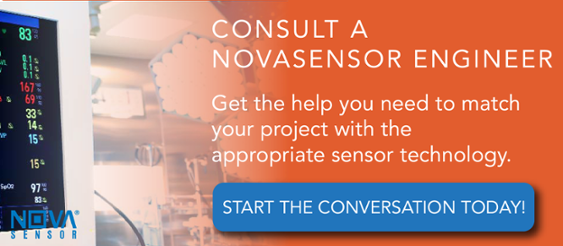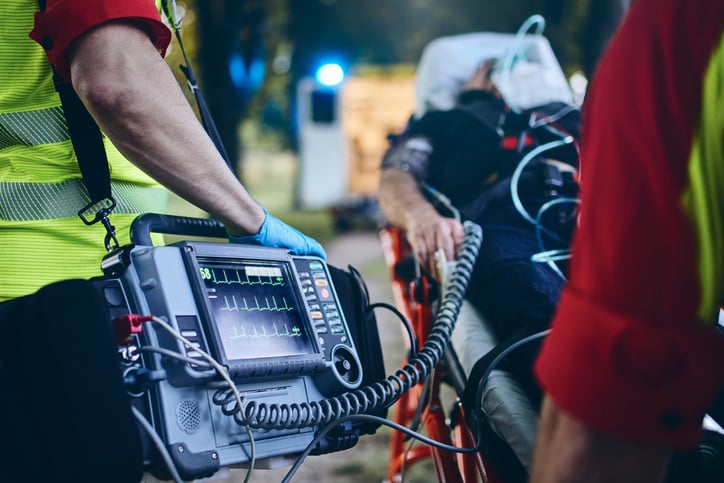Custom Miniature Medical Sensors & the Downsizing of Devices

Consider the pacemaker.
First introduced in 1958, the heartbeat stabilizing device wasn't exactly inconspicuous or convenient. Though lifesaving, the majority of its components were outside the body. Patients prescribed a pacemaker had leads surgically implanted through their chest, which connected to a box about the size of a book that sent small electrical jolts to the heart.
Within a few years, the pacemaker was redesigned as something much smaller and completely implantable. And in the decades that have followed, pacemakers have only become smaller -- now the device is the size of a large pill and weighs less than a nickel.
The miniaturization of the pacemaker isn't a one-time event in medical technology. Rather, it's a trend that continues throughout medical equipment design.
Downsizing medical devices isn't simply a matter of making them smaller. The technology that makes devices function accurately and effectively must also be available to support the transition.
Advanced sensor technology -- and their manufacturing -- plays a large role in making smaller medical devices a reality.
For OEM medical device designers and manufacturers, custom miniature medical sensors are opening doors to improved device designs and upgraded functionality without compromise.
In Brief: The How & Where Custom Miniature Medical Sensors
Back to the pacemaker example.
Comparing the first fully implantable version of the device to its latest iteration, there are some stark differences.
In addition to size and weight, pacemakers are now leadless and can be implanted directly into the heart. Though this transition took decades, it's a perfect example of what continues to happen with medical devices -- they're getting smaller.
But in addition to getting smaller and more portable, medical devices are seeing enhanced functionality. The pulse oximeter is a prime example of this. Small enough to fit on a patient's fingertip, the pulse-ox does the job of two devices, taking both pulse rate and oxygen levels.
What makes the intersection of smaller devices with no compromise in accuracy and functionality possible? Advanced custom miniature sensor technology.
Custom miniature medical sensors in healthcare, be it for temperature or MEMS pressure sensors (or any other sensor measureand of choice) -- are changing a host of OEM medical equipment in both size and function, including:
- Ablation catheters
- Cranial catheters
- Biopsy needles used in laser surgery
- IV fluid systems
- Ventilators
- In-home dialysis equipment
- CPAP O2 concentrators
The end result? Patients are getting the same quality of care in a much more convenient, less-disruptive manner. And with customization options available for miniature sensors, they can be designed to fit any medical device application.
Matching Medical Device Size & Function Without Compromise
In a perfect world, all it'd take to miniaturize a medical device would be to simply design the device and its components to be smaller.
Unfortunately, that's not reality and that approach, while possible, does not compensate for a great variety of factors that impact function or performance.
As the sensor technology needed in smaller devices also needs to be made smaller as well, customization plays a key role in making sure the monitoring device is able to do its job.
To that end, working with an established OEM custom sensor manufacturer is critical to creating smaller yet still reliable medical devices.
An experienced, knowledgeable custom sensor manufacturer understands all the design and performance issues when it comes to creating miniature sensors for medical devices. To be sure, a custom miniature medical sensor isn't one that's just made smaller. There are many key considerations to work through:
- Device size
- Intended lifespan
- Measurement area
- Environment
- Manufacturing
- Material selection
Device Size
The smaller a medical device, the less available real estate there is for the components comprising it. In simplest terms, this can make for an extremely tight fit -- sometimes to the micrometer.
Thus, designing a custom sensor to fit the smaller medical device is a highly challenging task. It requires precise measurements and engineering expertise. In order to ensure that the sensor fits perfectly within the available space, engineers must consider factors such as the shape and material gauges.
Intended Lifespan
A sensor that's meant to be used as a non-disposable solution for instance, those in a pulse-ox meter -- requires a design that endures repeated use. The engineered components must be tough enough to survive the rigors of a shock or drop that it may experience during normal usage.
However, there are many devices used in patient care that are single-use, such a blood pressure sensor used during surgery, that are invasive. For those devices, disposable medical sensors make sense. While single-use sensors should be designed to meet performance standards for application, they don't have to be designed with the exact same considerations as those meant for long-term use.
Measurement Area
In some respects, it's a matter of perspective. By that, we mean the smaller a sensor gets, the bigger the area it's monitoring seems. Think of it this way -- when you were a kid getting the top of your refrigerator seemed like climbing up Mt. Everest. As an adult, not so much.
For sensor technology, a reduction in size means the area of measurement becomes more isolated. To continue to provide robust performance and accurate results means adjusting the sensor so it compensates for this difference without compromise.
Environment
There's a big difference between how a sensor is designed and manufactured based on the environment it will operate in.
For instance, wearable sensors in healthcare that come in contact with or are immersed in fluid (say, blood) are made differently than those that only make direct contact with the skin. Even further, those that need to be placed under the skin or inside the body have additional criteria and design considerations.
Put simply: the sensors used in medical devices must operate reliably in a wide range of temperatures, moisture levels, and other environmental factors that may directly impact performance.
Manufacturing
While there are plenty of #1 considerations about a medical device's sensor performance, its accuracy gets top priority. Even a sensor that's off a nominal amount is enough to raise serious concern about its measurements.
How a sensor is manufactured plays a big role in its accuracy.
Why?
The smaller the sensor gets, the more refined and precise its manufacturing needs to be. In certain respects, miniaturization opens the doors to a greater potential for error in manufacturing. Thus, while some bigger sensors and their assemblies may be candidates for hand assembly, the smaller version may require computer-driven automated manufacturing.
Material Selection
There are no universal materials used in every medical device. But depending on the application and environment, some material combinations may be necessary for optimum performance.
For instance, if a sensor needs to measure strain or pressure (such as in biomechanical sensors), certain properties of elastomers like silicone can help make that happen. The material should also provide the right amount of compression and flexibility when applied to a device. Customized medical sensors meet these concerns.
What's more, the material used in medical sensor devices must be carefully considered, particularly when it comes to toxins or other substances that may leach into the body as well.
Custom Miniature Sensors | Big Future for Medical Device
As smaller medical devices change patient care, it's impossible to ignore the role custom miniature medical sensors play in making that change possible.
The trend toward miniaturization is only expected to continue as it always has. And with a greater need for precise measurements from smaller yet reliable components, custom miniature sensors are becoming increasingly important.
Advances in sensor technology via established OEM sensor manufacturers make it possible for medical device manufacturers to design downsized products with no compromise in accuracy or performance.
Miniaturizing Your OEM Medical Devices?
Our Nova Sensor engineers would love to discuss your sensor needs. Book time today!




